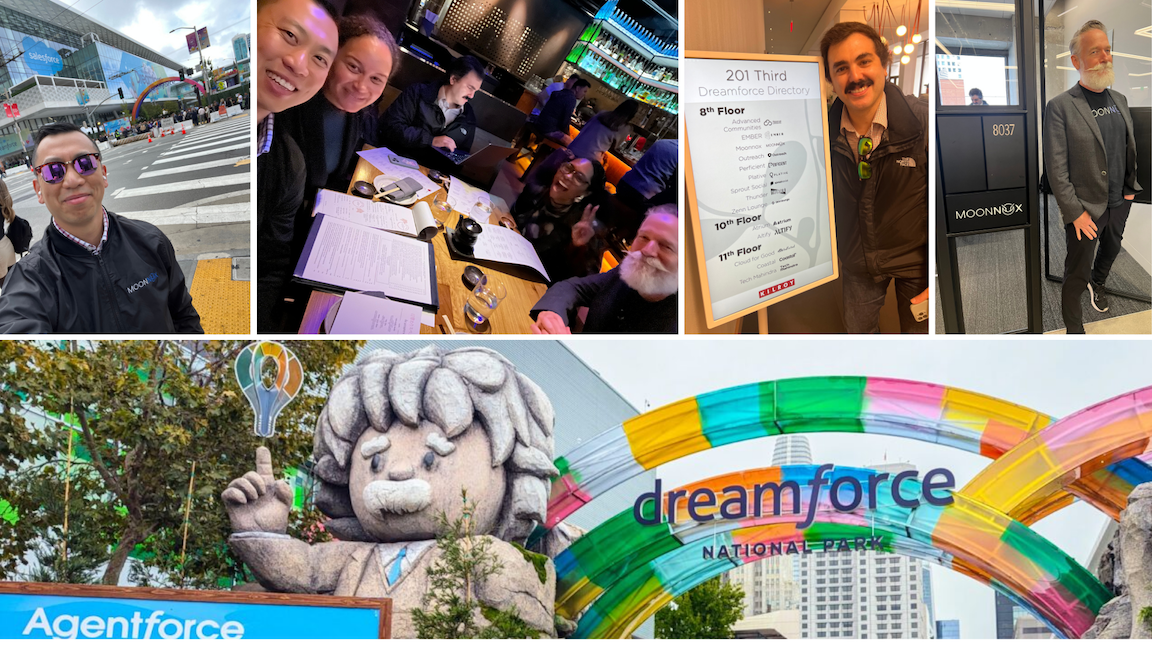It’s been a whirlwind couple of weeks for our team. After an energizing time at Dreamforce and countless insightful conversations, I finally had a chance to take a step back and reflect on everything we learned. This past weekend gave me time to organize my thoughts and build a clearer perspective, not just on the growing complexity and evolution of business models and value creation facing professional services and system implementation firms, but also on the broader future of knowledge work itself.
Everyone’s Building Islands
We are beginning to enter the era of agentic bloat, which will quickly compound upon itself at an exponential rate. The solutions we are seeing today reflect organizations focusing on isolated use cases of agent technology, automating or taking over specific workflow layers and processes in a one-off capacity, often owned and dictated by separate departments and teams. We are seeing transformative technical solutions being demoed, yet there has been little real discussion or vision around what it takes to drive a centralized governance strategy or orchestration across these agents.
All of these agents require context and orchestration across many different systems and processes, supported by strong guardrail capacity, to deliver the results they are marketed to achieve. This must go hand in hand with a clear governance strategy to ensure appropriate controls are in place for agents to operate as predictably as possible. The challenge is that the systems containing an organization’s valuable domain context are often siloed and deeply embedded into the end user experience. Unlocking the outcomes promised by these agents requires more than just integration but a deeper strategic understanding of how context, governance, and data pipelines need to work together to enable reliable agent performance.
The missing unlock for organizations is a deliberate approach and strategy to understand and leverage the business value of their context itself, enabling them to engineer the right pipelines that feed and sustain these agentic solutions.
The Two Conversations Happening Simultaneously
Across our meetings at Dreamforce, it became increasingly clear that there are two very different conversations happening in parallel, and neither is fully bridging the gap that is required between the two.
The executive conversation centers on outcomes and adoption: “What does rollout look like? How do we manage change? How fast can we get measurable value at the end-user level?”
The technical lead conversation focuses on capability: “How is this different from what I can already build with ChatGPT, or chain together in N8N or Zapier?”
Both points of view are valid and important, but each is currently operating within its own direction. Executives are focused on scalable impact and risk mitigation around adoption. Technologists are focused on proof-of-concept velocity and experimentation. The problem is that neither lens on its own can create sustainable transformation.
When organizations pursue isolated wins, quick builds, or ad hoc implementations, they risk creating fragmented systems that no one truly owns or understands. Adoption falters because context and governance weren’t engineered from the start. And when solutions live only in the heads of a few power users, the promise of organizational intelligence quickly collapses into operational debt.
Bridging these two conversations requires a shared approach between strategy and implementation, one grounded in context, orchestration, and repeatable design principles. Until that alignment exists, even the most impressive demos will remain isolated agentic workflows that contribute to long-term agentic bloat and governance risk, rather than institutional change capable of driving sustained adoption and unlocking the next era of professional services delivery and the business model shifts that will be dictated by it.
When Context Breaks, Agents Fail
The next big challenge isn’t building agents; it’s keeping them aligned when everything around them changes. These systems don’t operate in fixed, predictable paths. If an agent is designed to handle resource assignments and you introduce a new service line or change how projects are staffed, that input shift can break the agent’s logic. You have to re-engineer its context to restore predictable output. That’s the nature of LLM-driven systems. They’re probabilistic, not deterministic.
But making these systems work, understanding how to shape prompts, integrate workflows, and refine outcomes, requires a very specific type of muscle: context engineering. And that’s a skill most organizations simply don’t have yet. But here’s what’s fascinating, the next generation already does.
The Rise of the AI-Native Junior
I was talking to a potential hire fresh out of college who told me about her younger cousins, who were using ChatGPT to analyze a data dump of their dating app messages for red flags and optimize their replies. That’s not just curiosity. That’s pattern recognition, analysis, and adaptive strategy. It’s exactly the skill set required to navigate this new world of AI-augmented work.
There’s a lot of doom and gloom messaging right now about entry-level roles disappearing. It reminds me of graduating in 2009 during the recession. Tough market, lots of uncertainty, but on the other side came an explosion of new Web 2.0 technologies that my generation was uniquely equipped to navigate.
The role of the junior isn’t disappearing. It’s transforming.
In the past, juniors built their skills by doing the groundwork, the manual and repeatable tasks that gave them exposure to how projects actually ran. Today, those same tasks are being handled by AI systems. What’s left for humans at the entry level is more complex and creative, requiring judgment, pattern recognition, and context engineering from the start. It just so happens they’ve already been building the skills for it natively; they’re LLM natives who have spent the last few years of their academic and social lives using AI tools to synthesize, summarize, and reason. They instinctively understand how to engineer context and coax results from systems that don’t behave deterministically.
When they enter consulting or system integration, they won’t be doing repetitive grunt work. AI will. Their value will come from their ability to bridge human intent and machine reasoning. Seniors will bring the value of context: domain expertise, client dynamics, and strategic nuance. Juniors will operationalize it, designing how that expertise flows into and through AI systems.
It’s not a story about replacement. It’s about evolution.
The future will belong to firms that adopt an internal development strategy built around this role shift; providing the operating system and actively facilitating that symbiotic relationship between experience and technical fluency, where senior expertise fuels context and junior adaptability turns that context into scalable capability.
The Trailblazers Are Going to Be More Valuable (Not Less)
I keep thinking about the Trailblazer community, the admins, MVPs, and partners who have driven Salesforce innovation for more than two decades. They have been the connective tissue of the ecosystem, shaping product direction, driving adoption, and turning ideas into operational reality.
But lately, I have sensed real uncertainty in that community. As Salesforce and others accelerate into this new agentic era, many are asking where they fit. What happens when layers of automation start handling the work they used to manage? Where does their value go?
Our perspective at Moonnox is that they’re going to be more necessary than ever before.
Understanding and facilitating cross-departmental domain context, and translating that into business system functionality that can scale architecturally, is a very specific skill set. As we are rapidly entering the world where enterprise-level agentic bloat is going to be inevitable, dozens of autonomous solutions will need to coordinate, communicate, and operate under consistent governance. And someone will have to make that all work.
I think about all the orgs my team has had to work in, where we had to navigate the complex layers of security and permissioning, automations, integrations, and data. Now add non-deterministic agentic workflows into that mix, systems capable of producing outputs without fully understanding how those outputs ripple across the organization. Who within an organization truly understands the effort and complexity required to manage that?
In the same way the role of junior consultants is going to evolve, the same goes for the Trailblazer community. The skills that made them effective before, understanding processes, systems, and integrations, are the same skills that will be critical in administering this new agentic business layer.
What This All Says to Me
The conversations at Dreamforce reinforced something I strongly believe: we’re at a crossroads.
You can keep building AI point solutions in isolation. Or you can start thinking about how all of this comes together—how context gets captured, how intelligence compounds, how your people’s unique way of thinking gets preserved and amplified instead of averaged out.
AI is just a tool. Your collective intelligence is the actual asset. The question is whether you’re building systems that make that intelligence compound over time, or whether you’re just bolting AI onto the same fragmented approach you already have.
That's what I came away thinking about. Not what was announced. Not the demos. But the conversations in between. The conversations about what people are actually struggling with. What they’re worried about. And what they're completely missing.




.jpg)




